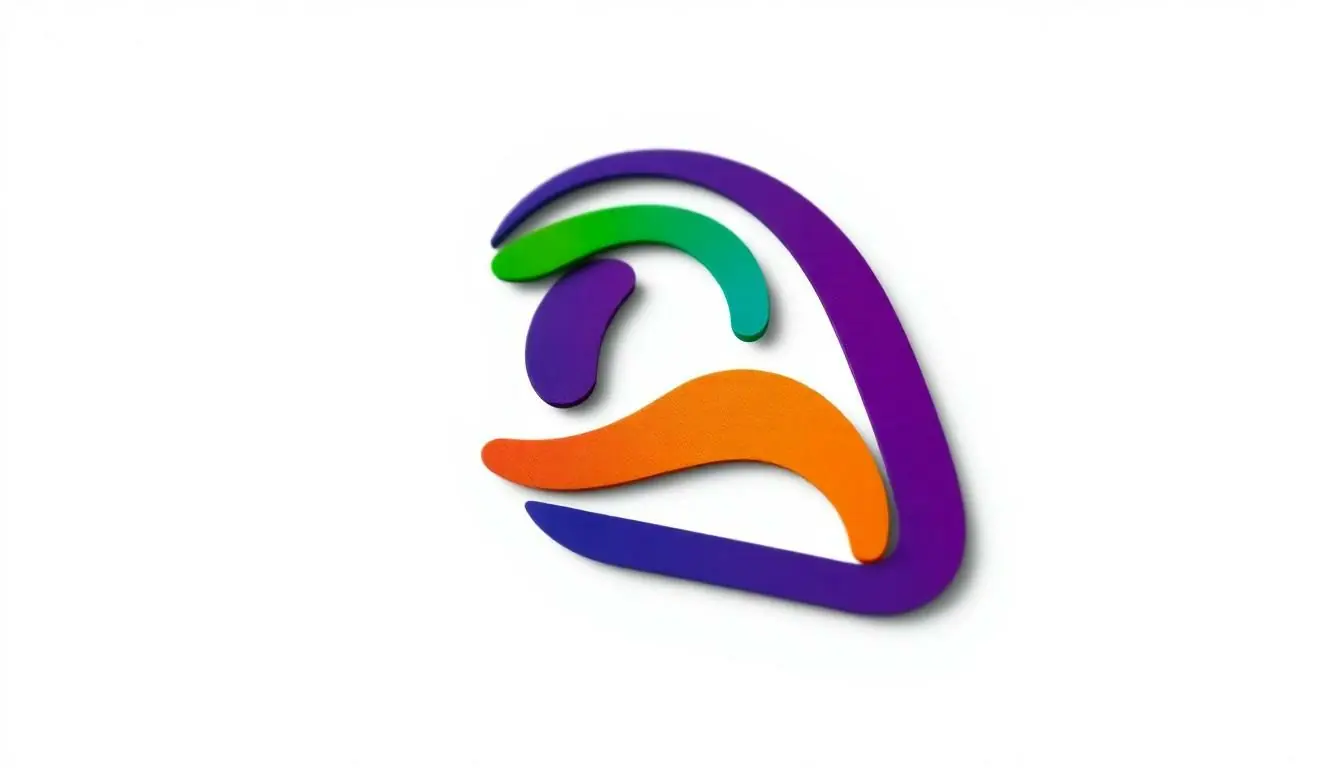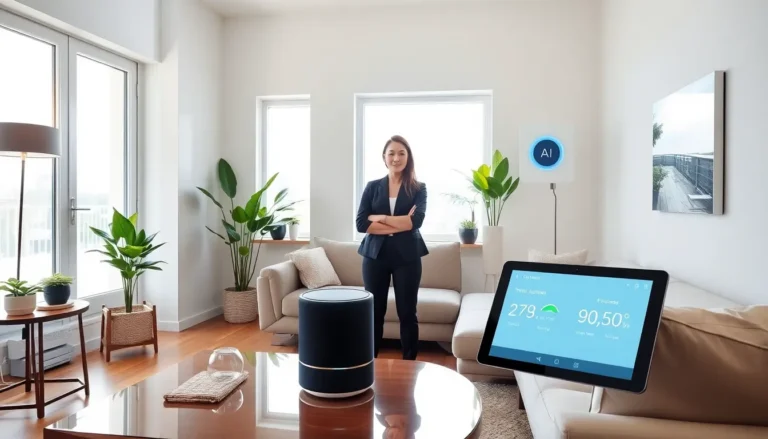In a world where creativity meets technology, the question arises: can ChatGPT whip up a logo that’s more than just a doodle on a napkin? With the rise of AI, businesses are eager to find out if this clever chatbot can transform their brand identity from bland to grand.
Imagine a virtual assistant that designs logos faster than you can say “graphic design.” Whether it’s a quirky coffee shop or a sleek tech startup, the potential is tantalizing. But can it really capture the essence of a brand without the human touch? Join the journey as we explore the capabilities of ChatGPT in logo creation and discover if this digital wizard can truly bring your vision to life—or if it’s just a fancy text generator trying to dress up as an artist.
Table of Contents
ToggleOverview of ChatGPT and Its Capabilities
ChatGPT represents advanced AI technology capable of processing and generating text based on input prompts. This model excels in understanding contextual nuances, making it suitable for tasks like brainstorming and generating ideas for various applications, including logo designs.
Logo creation involves more than just assembling shapes and colors. It requires an understanding of brand identity and visual communication. While ChatGPT cannot create logos directly, it can assist in the ideation phase by providing concepts, taglines, and design descriptions that align with a brand’s goals.
Designers often rely on ChatGPT for creative inspiration, offering suggestions that may spark new ideas. The AI can generate briefs outlining design elements such as color schemes, font styles, and imagery that resonate with target audiences. Therefore, those seeking to create logos can leverage ChatGPT’s suggestions as a foundational step in the design process.
Data from user interactions highlights the versatility of ChatGPT, as it adapts to different contexts and user preferences. Various businesses report improved efficiency in their design processes when utilizing AI-powered tools for brainstorming. These applications enable creators to explore diverse concepts quickly, which may lead to powerful and evocative logos.
ChatGPT encourages collaboration between human designers and AI, merging technology’s speed with human creativity. AI can streamline the initial stages of creative projects, allowing designers to refine and craft final outputs that truly reflect brand identities. Notably, this collaboration emphasizes the importance of retaining human oversight in the artistic process while tapping into the capabilities of AI.
Understanding Logo Design

Logos play a crucial role in establishing brand identity. They serve as visual symbols that represent a business, making it easily recognizable to consumers. An effective logo conveys the brand’s values, differentiates it from competitors, and fosters customer loyalty.
Importance of Logos for Brands
A logo acts as the face of a brand. First impressions matter, and a distinctive logo captures attention instantly. Emotional connections can form when consumers identify a logo with positive experiences. Studies show that 60% of consumers prefer to engage with brands that have a clear logo. Furthermore, consistent logo use promotes brand visibility across various platforms.
Elements of Effective Logo Design
Essential components determine a logo’s effectiveness. Simplicity ensures easy recognition, allowing consumers to recall the brand quickly. Versatility allows a logo to function well in different sizes and formats. Color choice influences perception; certain hues evoke specific feelings, making thoughtful selection critical. Lastly, a timeless design resists trends, ensuring longevity in the marketplace.
The Role of AI in Design
AI plays a significant role in modern design processes, reshaping how creatives work. It offers tools that enhance productivity and inspire innovation in graphic design.
How AI is Transforming Creative Processes
AI tools streamline creative workflows by automating routine tasks. Designers rely on AI to generate ideas and concepts rapidly, leading to a more efficient brainstorming process. Brands benefit from rapid prototyping and visualization, allowing them to evaluate multiple designs in a shorter timeframe. Advanced AI algorithms analyze trends and user preferences, providing insights that inform design decisions. Teams collaborate effectively, using AI-generated briefs and suggestions as a foundation for their work. User-generated data shows that employing AI speeds up ideation and boosts creative output significantly.
Limitations of AI in Design
Despite its advantages, AI has limitations in design. AI lacks the emotional depth and intuition that human designers bring to the creative process. It struggles to fully understand the nuances of brand identity and consumer emotions. Originality can fall short, as AI often mimics existing patterns rather than creating truly unique designs. Furthermore, oversight from human designers remains essential to ensure quality and artistic integrity. Brands find that while AI can enhance efficiency, it cannot replace the critical thinking and imaginative capabilities inherent in human creativity.
Can ChatGPT Make Logos?
ChatGPT serves as a valuable resource for generating ideas and concepts related to logo design. This AI tool supports users in brainstorming by providing fresh perspectives and design descriptions that align with specific brand goals.
Tools and Methods for Logo Creation
Designers often integrate tools like ChatGPT into their workflow to enhance creativity. ChatGPT generates taglines, color palette suggestions, and font styles that facilitate the ideation process. Additionally, this AI can analyze user inputs, offering tailored advice to refine design concepts. Effective collaboration between designers and ChatGPT leads to a more efficient design process, reducing time spent on initial brainstorming and encouraging exploration of various design avenues.
Case Studies and Examples
Numerous brands have harnessed AI in their logo development processes. For instance, a tech startup used ChatGPT to create a brief that inspired a design team, resulting in a modern logo reflecting innovation and reliability. Another local business received assistance from ChatGPT in selecting colors that resonated with their mission, ultimately leading to a memorable visual identity. These examples demonstrate the potential of combining human creativity with AI capabilities, enhancing overall design outcomes.
Pros and Cons of Using ChatGPT for Logo Design
Using ChatGPT for logo design presents distinct advantages and disadvantages.
One significant pro is rapid ideation. ChatGPT quickly generates diverse logo concepts and design briefs that save time during the brainstorming phase. Designers benefit from this efficiency, allowing them to focus on refining their ideas.
Another benefit is accessibility. Non-designers can leverage ChatGPT’s capabilities to produce initial design ideas. This democratization of design aids individuals and small businesses without extensive design budgets.
ChatGPT fosters collaboration as well. It enhances creative discussions between human designers and AI, resulting in a more diverse set of ideas. This synergy often leads to innovative solutions that designers might not consider on their own.
Despite these advantages, notable cons exist. One major limitation is the lack of visual output. ChatGPT cannot create actual logo designs but primarily offers text-based suggestions. Designers must translate those ideas into visual formats, which can require additional time and skill.
Emotional depth also poses a challenge. AI lacks true understanding of brand identity and consumer emotions, which are crucial for impactful logo design. This gap can lead to suggestions that may not align perfectly with a brand’s vision or values.
Moreover, reliance on AI could stifle creativity in some cases. While ChatGPT provides valuable prompts, excessive dependency may hinder the unique artistic input that human designers contribute. Striking a balance between using AI tools and preserving personal creativity enhances outcomes.
Ultimately, ChatGPT serves as a useful assistant in the logo design process, combining its strengths with human insight to achieve effective branding solutions.
ChatGPT holds significant promise in the realm of logo design by providing valuable support during the ideation phase. Its ability to generate concepts and assist with design elements can enhance the creative process for both experienced designers and those new to branding. While it can’t create logos directly, its contributions can streamline workflows and inspire innovative ideas.
However, the importance of human creativity and emotional insight remains paramount. A successful logo requires more than just technical elements; it needs to resonate with the target audience. By leveraging ChatGPT’s capabilities while maintaining human oversight, brands can achieve a harmonious blend of efficiency and creativity, ultimately leading to impactful branding solutions.





